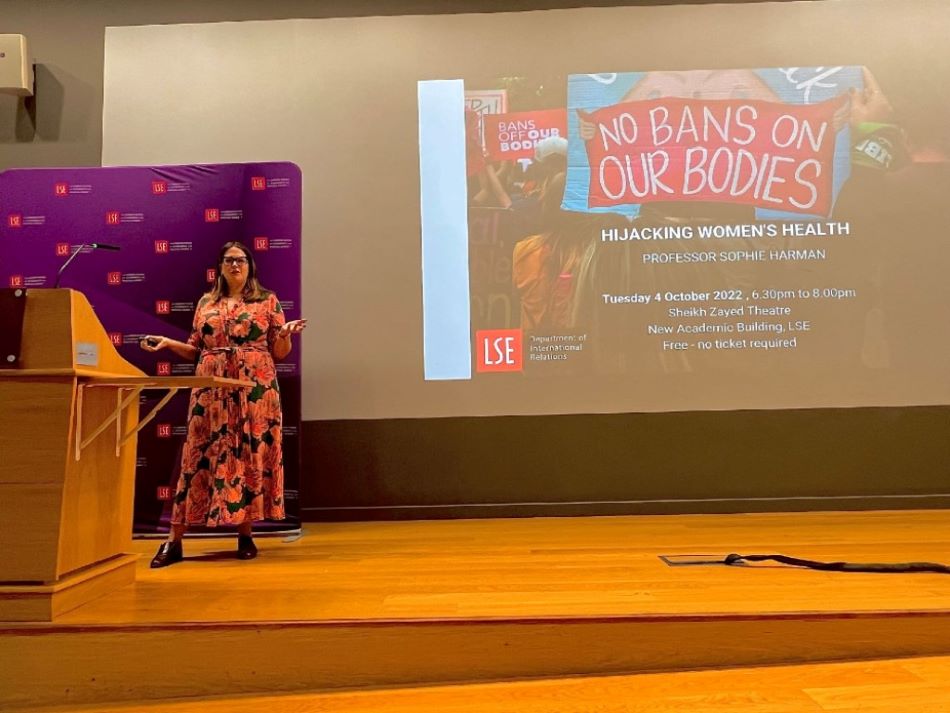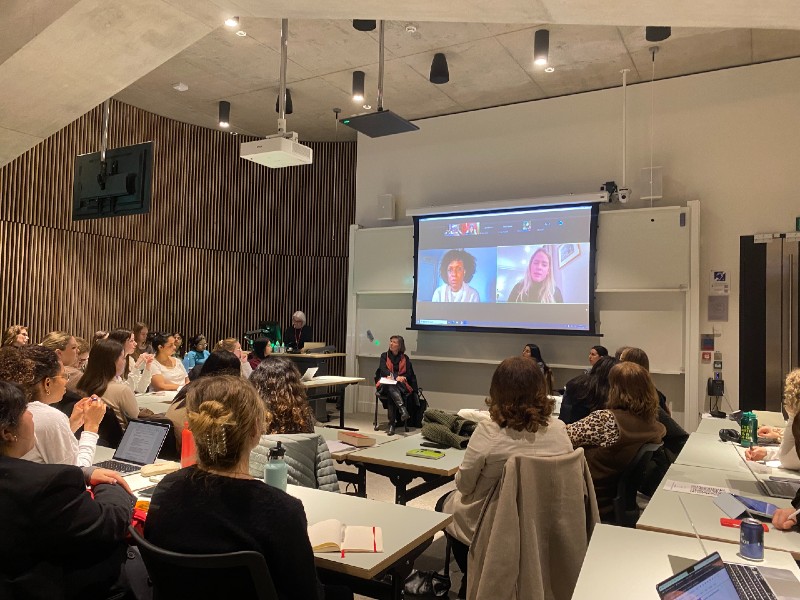In this opinion post, we hear from Paula Collio Méndez, an MSc International Relations student at LSE, who argues that the replications of power structures under the ideas of liberty in the case of France, based on a singular notion of ‘modernity,’ perpetuates colonial power dynamics that disproportionately affect non-white and non-first-world women.

Over the past two decades, Muslim women have faced an increase in the prohibition of the use and persecution of traditional attires from European countries like Germany, Belgium, and Austria. One of the most high-profile and systematic bans is the rulings that France has issued in the name of its principle of secularism, or ‘laïcité’. These laws are intended to keep the state neutral in religious matters while guaranteeing citizens the right to freely practice their religion in private. But where does this “freedom” start and end?
The restriction against women wearing headscarves (such as the Hijab, Niqab, Burka, Chador, and Khimar) or recently the Abaya, the long, loose dress worn by some, separates Muslim women as the “other” within French society. The questioning of this attire is only focused on ‘traditional looking Muslim women’ – a white woman can wear it in the name of fashion without restriction. It is more complex than simply seeing it as freedom or not, because it involves components of discrimination against race, minorities (among many others), and of course, gender.
The questioning of this attire is only focused on ‘traditional looking Muslim women’ – a white woman can wear it in the name of fashion without restriction.
In fact, French President Emmanuel Macron turned to ‘feminist’ arguments and claimed that this legislation is to help and protect Muslim women, allowing them to live ‘free’ lives. Authors like Chakravorty Spivak have a quote that applies specifically to this case: “white men saving brown women from brown men” that falls into the practices known as ‘white or western feminism’. These ideological statements reproduce Western canons of the ‘correct way to be a woman’ in a modern world that has understood race as gendered, and gender as raced, in particularly different ways for Europeans/whites and colonised/non-white people.
From this perspective, we can question whether being a woman in France under the principle of ‘laïcité’ actually oppresses rather than liberates. A particular notion of “womanhood” that conforms to liberal feminist ideals is being imposed. This unravels a ‘white saviour complex‘ that makes some white women claim that they have the knowledge and obligation to rescue the ‘Other’ women, whether these ‘Other’ women need or want it or not.
We can question whether being a woman in France under the principle of ‘laïcité’ actually oppresses rather than liberates. A particular notion of “womanhood” that conforms to liberal feminist ideals is being imposed.
The “liberating” ideas under ‘liberal’ feminism
Liberal feminism centres on equality in the public sphere between women and men, to be achieved through legal changes. Its primary aim is to enable equal access for women to education, health provision, and the workplace. Issues concerned with the private sphere are less focused upon. Liberal feminists have been critiqued for their heteronormative investment in, and lack of challenge to, patriarchy as an institution. This liberal or commonly (and pejoratively) named “white feminism” is characterised by its focus on the experiences and struggles of white women. It neglects the distinct forms of oppression encountered by women from ethnic minority backgrounds, or those lacking other privileges, without considering the intersectionality in the matter. Under these premises, the core idea of feminism that “the personal is political” does not apply.
The replications of power structures under the ideas of liberty in the case of France, based on a singular notion of ‘modernity,’ perpetuates colonial power dynamics that disproportionately affect non-white and non-first-world women. The exclusion of non-white women from emancipatory movements is a paradox of freedom, where every decision that falls outside of the parameters of Western standards is deemed incorrect and subject to regulation, particularly impacting Muslim women. Ideas from authors like Sara Salem raise a valuable critique of mainstream feminism, noting its tendency to overlook the significance of religion while placing excessive emphasis on liberal notions of decision-making. There is a common oversimplification that views secularisation as modern, and religion as traditional, negative, and obsolete, which can undermine the nuanced experiences of religious women.
There is a common oversimplification that views secularisation as modern, and religion as traditional, negative, and obsolete, which can undermine the nuanced experiences of religious women.
In Maheen Haq’s words, this type of feminism intersects deeply with imperialism and Western saviourism, leading to the hijacking of Muslim women’s voices when they speak out against patriarchy within their own cultures. Their narratives and activism are exploited by governments who manipulate the issue of gender injustice in the name of secularism and liberty, just like the case of France. As Haq states, under this notion of secularism a woman could only have her revolutionary spirit and be actively resisting the oppressing power if she took off her veil and started to dress like her oppressors. Their veil is not just a religious practice now, it is a symbol against cultural imperialism. Unfortunately, secularism is instrumentalised to establish complete control over a religious minority and further push them to the margins of society where they hold no social or political power. No other religious group in France is as targeted as the Muslim community.
Their veil is not just a religious practice now, it is a symbol against cultural imperialism.
We should not overlook that in parts of the world the veil is synonymous with oppression. At the same time, the intersectionality of factors complexifies and makes it impossible to play a totalitarian game of worth without understanding the reasons behind the motives of the women who wear it. Imposing a single truth keeps perpetuating colonial and western logics directly associated with white feminist saviours.
Banner photo from Julie Kertesz Flickr CC by NC SA 2.0 DEED
This article represents the views of the author, and not the position of the Department of International Relations, nor of the London School of Economics.






1 Comments